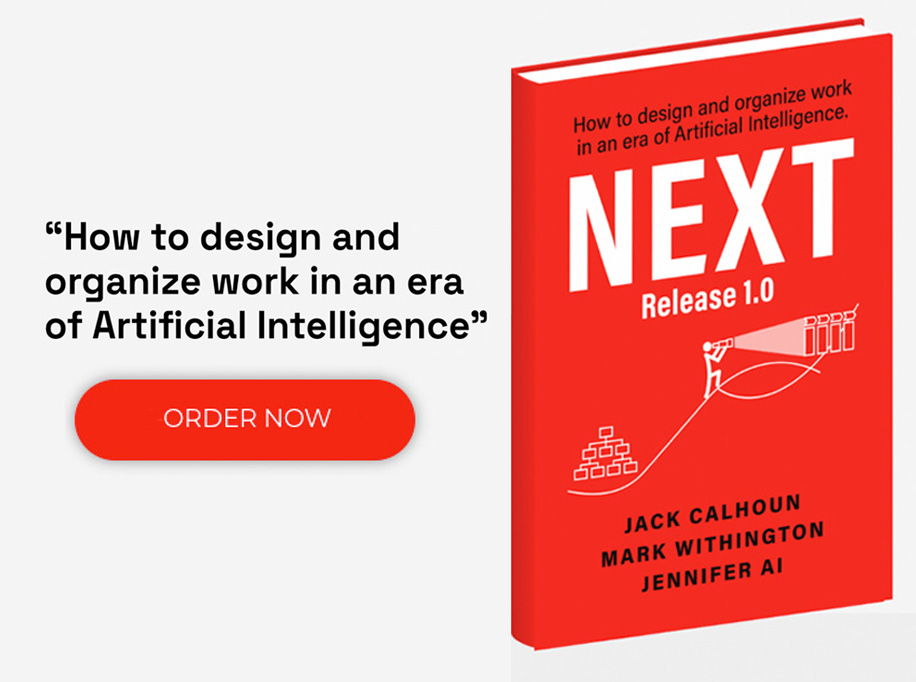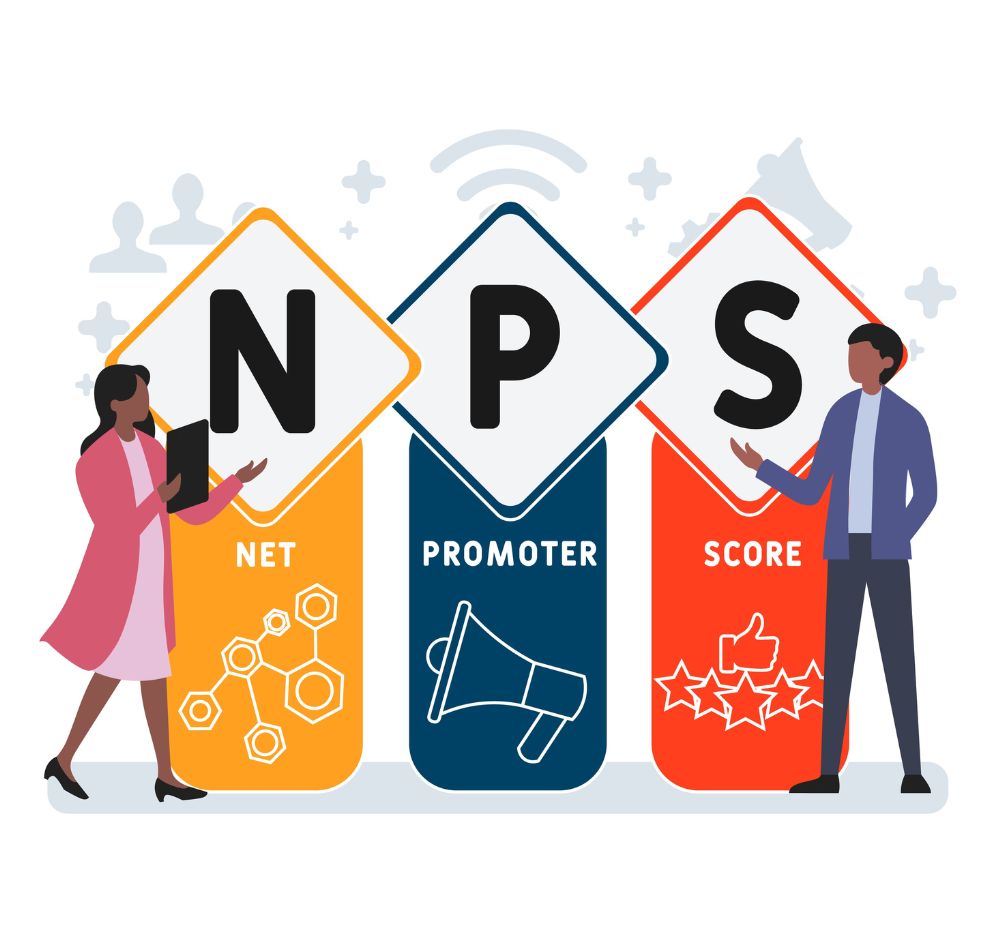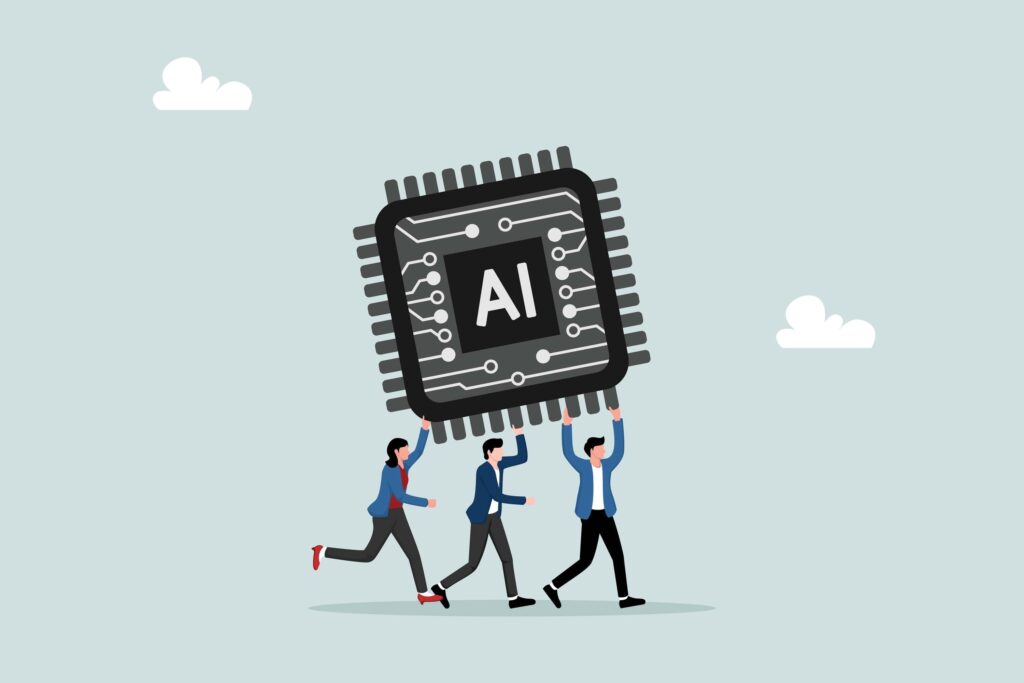The promise of artificial intelligence is vast, but realizing its full potential requires businesses to overcome a series of adoption challenges. These challenges, ranging from strategic misalignment to talent shortages, can be daunting for organizations looking to harness the power of AI. In this guide, we identify the most pressing adoption challenges and provide an AI roadmap for overcoming them.
Why Is AI Adoption Crucial For Your Business?
Now, you might be thinking, “Why should I bother with AI? My business is doing just fine.” But here’s the thing – given that change is the only constant, “just fine” isn’t going to cut it. If you want your business to thrive, you need to strategically embrace AI.
When you harness the power of AI, you open the door to new possibilities. Suddenly, you can create products, services, and experiences tailored to your customers’ needs, sometimes before they even realize they have those needs.
AI tools also give your hardworking employees an extra set of hands, except these hands never get tired. Plus AI can learn and adapt. The more you use it, the smarter it gets. It’s like your most valuable team member who is constantly growing and evolving.
Common AI Adoption Challenges
As businesses proceed on their AI adoption journey, they often face a series of challenges that can hinder progress and limit the impact of their AI initiatives. Let’s take a closer look at some of the most common hurdles:
Lack of a Clear Strategy
One of the biggest stumbling blocks is the absence of a well-defined AI strategy. Many organizations dive into AI projects without clearly understanding how AI aligns with their overall business objectives. They may pursue AI for AI’s sake, rather than focusing on specific use cases that can drive real value. AI initiatives can quickly lose direction and momentum without a roadmap that outlines priorities, resources, and expected outcomes.
Poor Data Quality or Infrastructure
AI is only as good as the data that fuels it. Poor data quality, siloed data, or inadequate data infrastructure can severely limit the effectiveness of AI systems. AI models will struggle to generate reliable insights if data is inaccurate, incomplete, or inconsistently formatted. Moreover, if data is scattered across different systems or departments, creating a unified view supporting AI decision-making can be challenging.
Privacy Concerns
Businesses have to navigate serious concerns about data privacy and security. AI systems often require access to sensitive data, such as personal information or financial records. Any breach or misuse of this data can have serious consequences, both legal and reputational. Balancing the need for data with the imperative to protect privacy is a delicate dance that many organizations struggle with.
Fear of Change
For many employees, the prospect of AI can be daunting. There may be fears about job loss, skill obsolescence, or loss of control. Some may view AI as a threat rather than an opportunity. Overcoming this resistance to change requires a concerted effort to educate, train, and engage employees. Leaders must communicate a clear vision for how AI will augment and enhance human capabilities rather than replace them. Building a culture of continuous learning and experimentation is key to helping employees adapt and thrive in an AI-driven world.
Integration Challenges
Many organizations struggle with the technical challenges of integrating AI into legacy infrastructure. There may be compatibility issues, data silos, or a lack of interoperability between different systems. Moreover, AI models often require ongoing monitoring, maintenance, and updates to remain effective over time. Without the right processes and tools in place, integration can quickly become a bottleneck.
Talent Gap
AI skills are in high demand, but short supply. Many organizations struggle to find and retain the talent they need to drive their AI initiatives forward. Data scientists, machine learning engineers, and AI specialists are often sought after by multiple companies, driving up salaries and making it difficult to build in-house expertise. Even when talent is available, there may be a mismatch between the required skills and those available. Closing the AI talent gap requires a multi-pronged approach that includes upskilling existing employees, partnering with academic institutions, and building a compelling employer brand that attracts top talent.
Overcome AI Adoption Barriers with Accelare
While these challenges can seem daunting, they are not insurmountable. By taking a strategic, holistic approach to AI adoption, businesses can overcome these hurdles and unlock AI’s full potential. It starts with a clear vision, a commitment to data excellence, a focus on ethics and transparency, a culture of continuous learning, and a willingness to experiment and iterate. With the right mindset and approach, businesses can turn these challenges into opportunities for growth and transformation.
At Accelare, we understand the complexities of AI adoption and have developed a proven methodology to guide businesses through the process. Our AI Roadmap helps organizations quickly identify processes that could benefit from AI, ensuring that your AI initiatives are aligned with your overall business objectives.
Take the first step in your AI adoption journey by completing our quick, online, 4-minute Digital Disruption Assessment. This assessment will reveal your organization’s disruption exposure and provide valuable insights into where AI can impact your business most.
—
References:
https://www.accelare.com/digital-transformation/ai-roadmap
https://www.accelare.com/digital-transformation/professional-development
https://www.accelare.com/digital-transformation/ocm
https://www.accelare.com/digital-transformation/digital-strategy
https://www.accelare.com/
https://sqyopd0f91i.typeform.com/to/N8U6pcGy?typeform-source=www.accelare.com#mark=xxxxx











